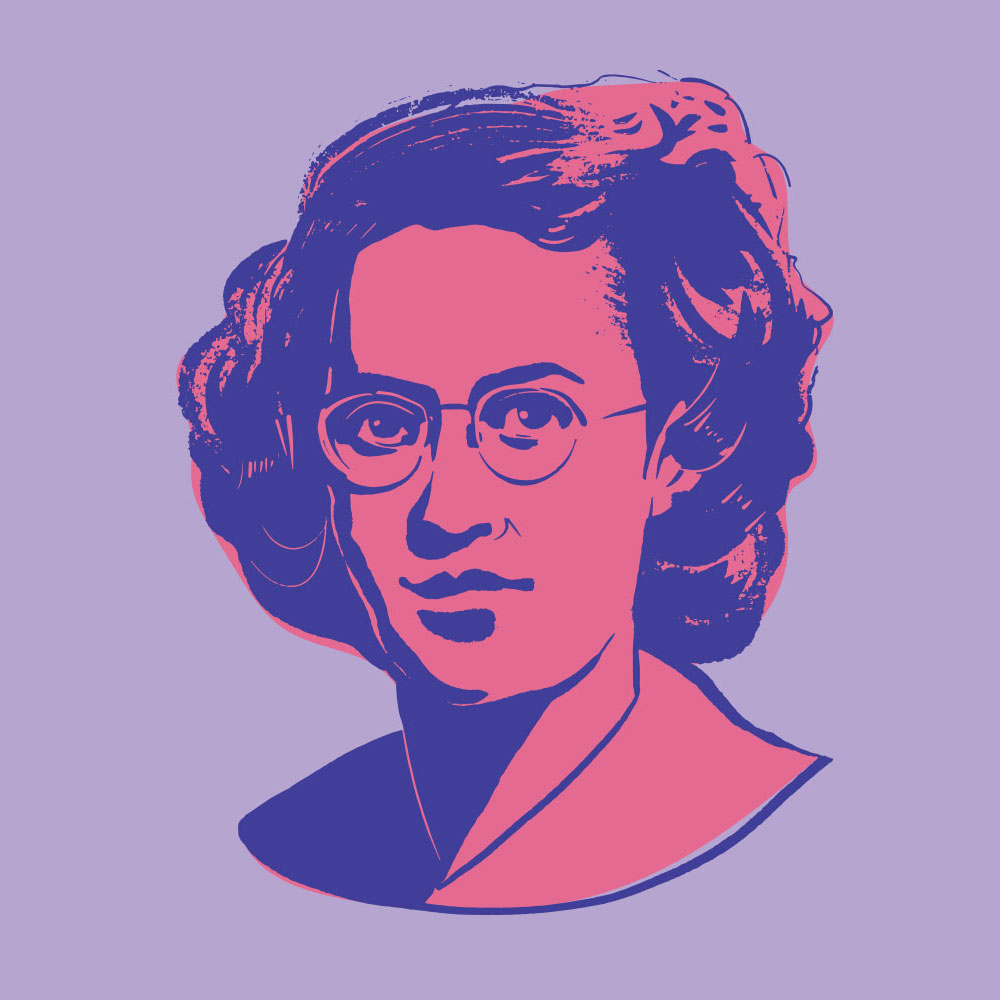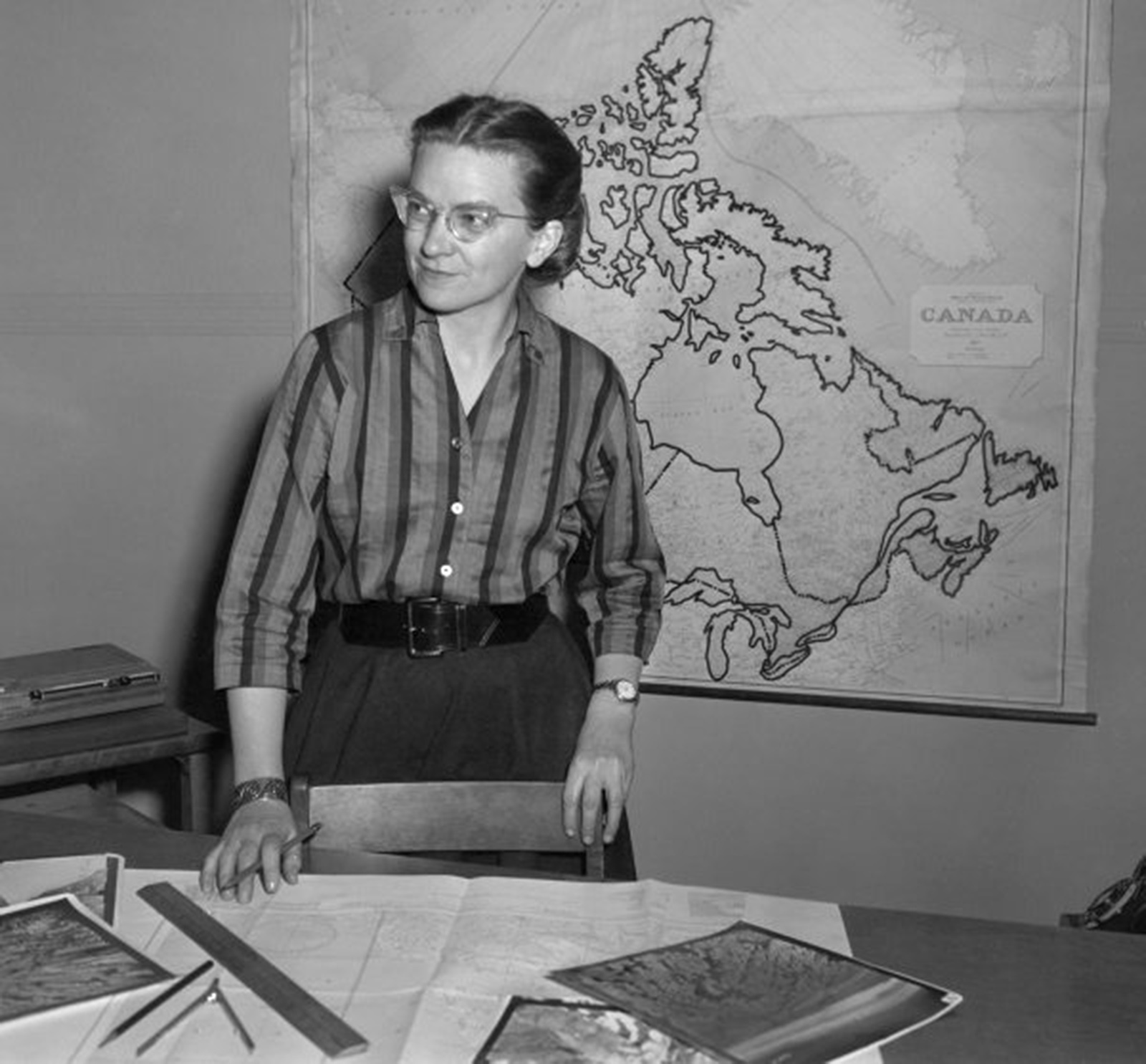
Early Life
Beatrice Helen Worsley (also known as Trixie) was born on 18 October 1921 in Queretaro, Mexico. Her father, Joel Worsley, was born in Manchester, United Kingdom, and moved with his wife, Beatrice Marie, to Xia, Mexico, to work at her family’s textile mill in 1908. When the mill was destroyed by rebels during the Mexican Revolution in 1917, the family relocated to El Salto, Mexico. Beatrice Helen and her older brother, Charles Robert, were homeschooled and largely isolated from the surrounding community.
Education
In 1929, the Worsley family decided to leave Mexico and move to Toronto, Ontario, for the sake of their children’s education. Beatrice became a student at Brown Public School until 1934 and attended The Bishop Strachan School for university preparation. The youngest in her class, Worsley excelled in the university track at The Bishop Strachan School, winning awards for math, physics, divinity, English and general proficiency in 1937. She graduated senior matriculation in 1939, again winning awards in science, math and general proficiency, as well as the Governor General’s Award for highest overall grade.
In 1939, Worsley began studies at Trinity College at the University of Toronto, earning numerous scholarships during her years as an undergraduate student. In the summer of 1942, she took a summer job in the actuarial department of the Manufacturers Life Insurance Company in Toronto, where she was exposed to mechanical calculators for the first time. In 1944, she earned her undergraduate degree in mathematics and physics.
Military Research
After completing her degree, Worsley joined the Women’s Royal Canadian Naval Service (WRCNS). On 5 April 1944, she began service as a probationary sub-lieutenant at the HMCS Conestoga base in Galt, Ontario (now Cambridge). After months of training and general duties, she was commissioned and transferred to the Naval Research Establishment (NRE) at HMCS Stadacona in Halifax, Nova Scotia, on 9 September 1944. There, she worked as a harbour defense researcher. Worsley performed data analysis related to degaussing ships, a process that reduced the ships’ magnetic signature to make them safer around German magnetic mines. After the Second World War ended in 1945, Worsley was the only member of the WRCNS to remain at the NRE. She was promoted to lieutenant and began research on hull corrosion, which involved over 150 days of research at sea, often in harsh winter conditions.
Graduate Studies at MIT
In 1946, Worsley left the NRE to pursue a master’s degree in mathematics and physics from the Massachusetts Institute of Technology (MIT) in Cambridge, Massachusetts. At MIT, Worsley attended courses by prominent professors, including Laszlo Tisza on solid-state physics and Henry Wallman on function theory.
She was also exposed to early computers at MIT, where professor Vannevar Bush had designed the differential analyzer, an analog computer with moving parts that solved complex differential equations. As the design of the differential analyzer evolved, the computer used both mechanical and electronic parts. For her master’s thesis, Worsley prepared a mathematical survey of these early computers, entitled A Mathematical Survey of Computing Devices with an Appendix on Error Analysis of Differential Analyzers. After completing her master’s degree in 1947, she returned to Canada and informed her family of her intention to work in the emerging field of computer science.

Early Career
In the summer of 1947, Worsley found a position at the National Research Council of Canada in Ottawa, Ontario. She worked in the mechanical engineering division as an aerodynamics research officer for a short time. However, several months later, the University of Toronto opened a new Computation Centre — the first of its kind in Canada — and Worsley eagerly took a position as a project assistant in January 1948. The Computation Centre was a forerunner of the department of computer science.
Worsley and her fellow project assistant, J. Perham Stanley, worked with IBM punch card calculators and — together with their supervisor, Calvin C. Gotlieb — used the machines to provide calculations for Atomic Energy of Canada Limited in Chalk River, Ontario. Interest in the future of computing in Canada was growing outside the walls of academia. The same year, Worsley used Meccano (a metal construction system) to create a differential analyzer.
Did you know?
In 1948, Beatrice Worsley built a differential analyzer (an early mechanical analog computer that could solve equations) using Meccano parts. She wasn’t the first researcher to build a computer using pieces from the model construction set (Meccano sets have been sold since 1901). Douglas Hartree and Arthur Porter built the first Meccano differential analyzer in 1934 at the University of Manchester, followed by a similar machine built by J.B. Bratt at the University of Cambridge in 1935. It’s estimated that about 15 such machines were built around the world. The Meccano machines were relatively cheap to build and accurate enough to solve many scientific problems.
Doctoral Studies
Worsley and Stanley visited the Mathematical Laboratory at the University of Cambridge to learn about an early computer called the Electronic Delay Storage Automatic Calculator (EDSAC). Though the computer was nearly complete when they arrived, Worsley and Stanley helped prepare for its first run on 6 May 1949. On its first run, the EDSAC printed tables of squares and prime numbers and Worsley put together a report that included these results. Her report was published in Brian Randell’s The Origins of Digital Computers (1975), a classic book on the history of computing.
After her research trip, Worsley stayed in England to complete a PhD in mathematical physics at Newnham College at the University of Cambridge. She continued to work in the Mathematical Laboratory and attended Albert Ingham’s course on summable series and number theory, Douglas Hartree’s course on numerical analysis, and numerous courses in quantum theory. Her doctoral work was supervised by prominent early computer scientists, including Alan Turing, Douglas Hartree and Maurice Wilkes.
In 1951, she returned to Canada with her dissertation partially finished. She continued her studies under the supervision of Byron A. Griffith, a mathematics professor at the University of Toronto. She quickly completed her dissertation and rejoined the University of Toronto’s Computation Centre as a staff mathematician in July 1951. Her PhD dissertation, entitled Serial Programming for Real and Idealized Digital Calculating Machines, is one of the first on modern computers. Considered the first female to complete a PhD in computer science, Worsley officially received her doctorate in 1952.
Ferut: Canada’s First Electronic Computer
While Worsley was in the United Kingdom, the University of Toronto had been designing and constructing Canada’s first computer, the University of Toronto Electronic Computer Mark I (UTEC), for use by the National Research Council, the Canadian Defense Research Board and industry. The UTEC was operational by October 1951 but fraught with problems, and it was left unfinished when the Canadian Defense Research Board and National Research Council decided to purchase a completed system from the U.K. in 1952: the Ferranti Mark I. It would be Canada’s first fully functional electronic computer.
When the Ferranti Mark I arrived, Worsley operated the console and nicknamed it “Ferut” (for Ferranti computer at the University of Toronto). Worsley and Calvin C. Gotlieb ran courses on programming for Ferut. However, Ferut was extremely difficult to program, and many students dropped out of the courses. In 1953, Worsley and professor J.N. Patterson Hume created Transcode, a coding language for Ferut. Transcode was a highly successful automatic coding system that made programming easier for users because they could write instructions for Ferut in a simplified language. Worsley authored and published 17 technical papers between 1952 and 1964, most about the use of Transcode for specific problems and calculations. (In 1958, the University of Toronto replaced Ferut with an IBM 650.)
Teaching
During the 1950s, Worsley taught many non-credit courses on computing, which later became credit courses at undergraduate and graduate levels. In 1960, the University of Toronto promoted Worsley from staff mathematician to assistant professor of physics. She continued to teach courses in the physics department and, as computers became more prominent, the computer science content of her courses increased.
In 1962, the University of Toronto established the Institute of Computer Science. Two years later, in 1964, the university opened a graduate program in computer science and promoted Worsley to associate professor of physics and computer science.
Worsley left the University of Toronto in 1965 to become a computing advisor for Queen’s University in Kingston, Ontario, where she took on many teaching duties. In 1969, Worsley became an associate professor in the newly formed Department of Computing and Information Science, which she had helped to found with Mers Kutt. She developed curriculum for undergraduate and graduate levels.
In 1971, she took a sabbatical year at the University of Waterloo to conduct research in the Department of Applied Analysis and Computer Science. Here, she revisited earlier research interests, working on assembly language and its relation to computer structure. While on sabbatical, Worsley died of a heart attack at the age of 50 on 8 May 1972.
Memberships and Publications
Worsley was a member of the international Association for Computing Machinery and the Computing and Data Processing Society of Canada (now the Canadian Information Processing Society), serving as director of the national executive in 1968. Throughout her academic career, Worsley published numerous papers in academic journals and in the Quarterly Bulletin, a publication of the Computing and Data Processing Society of Canada. Worsley donated a number of her early papers and records to the Smithsonian Institution.
Personal Life
In addition to her pioneering work in the emerging field of computer science, Worsley was interested in music, playing piano and photography. She was remembered by her colleagues for her quiet and pleasant personality.
Legacy
Worsley left her estate to the University of Cambridge, including money for the Lundgren Fund, in honour of Helge Lundgren. The Lundgren Research Award is awarded yearly to PhD students who are engaged in research in a scientific subject, with preference to candidates working in the Computer Laboratory or “whose research has been interrupted by national service or personal misfortune.” The identity of Helge Lundgren remains unknown.
Worsley’s friend and colleague, professor Charlotte Froese Fischer, established the Beatrice “Trixie” Worsley Graduate Scholarship in Computer Science at the University of Toronto in honour of her trailblazing scientist friend. The award funds PhD students who actively promote women in computer science. In 2014, Worsley received a lifetime achievement award from the Canadian Association of Computer Science in recognition of her outstanding contribution in research.
Honours and Awards
Canadian Association of Computer Science Lifetime Achievement Award in Computer Science (2014)

 Share on Facebook
Share on Facebook Share on X
Share on X Share by Email
Share by Email Share on Google Classroom
Share on Google Classroom



